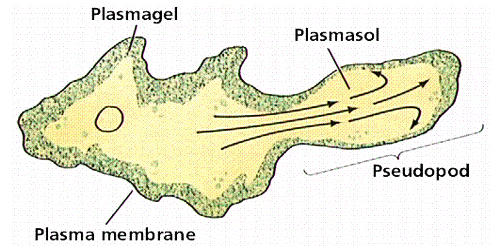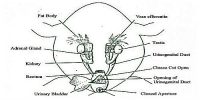Animals move from one place to another for food, self-defense, and in search of a favorable environment. Such voluntary movement of the animal is known as locomotion. The Amoeba moves very slowly and its locomotion is irregular. Amoeba moves with the help of the special type of finger-like outgrowth known as pseudopodium (Plural-pseudopodia). The Amoeba moves from place to place by forming temporary finger-like projections called pseudopodia. A pseudopodium may form at any place upon the surface of the body. It appears as a blunt projection of ectoplasm.

The meaning of pseudopodium is “false foot”(pseudo means False and pods means foot). Amoeba at the time of locomotion, produce pseudopodia from different parts of the body and these again disappear within the body. This particular type of locomotion of Amoeba is called the Amoeboid movement. At the time of locomotion, pseudopodia come out from any part of the body, and the animal advances in that direction. Simultaneously with the formation of pseudopodia, the protoplasm of the body of Amoeba flows in that direction, and with that other parts of the body move that way.
Many pseudopodia appear simultaneously but usually, one of them is extended and the others are retracted. This sort of peculiar motion by thrusting out pseudopodia and then flowing into one of them is known as an amoeboid movement.
Effective locomotion occurs only when the animal is in contact with the substratum and not when it is floating on the surface of the water. The tip of the pseudopodium may adhere to the substratum by secreting a sticky juice and the entire animal glides forward into the pseudopodium.
In this way, Amoeba advances towards its target. It can form pseudopodia at any part of its body and always move in the direction of pseudopodia. When new pseudopodia are formed on one side of the body, the old pseudopodia disappear. In this way, Amoeba moves by rolling.
The speed of locomotion usually ranges from 0-5 to 5 Micra per second. In favorable condition the speed may be as high as 1 inch (25 mm.) per hour. It varies with the temperature, increasing slowly up to a temperature of 30°C. Movement totally ceases at 33°C.















